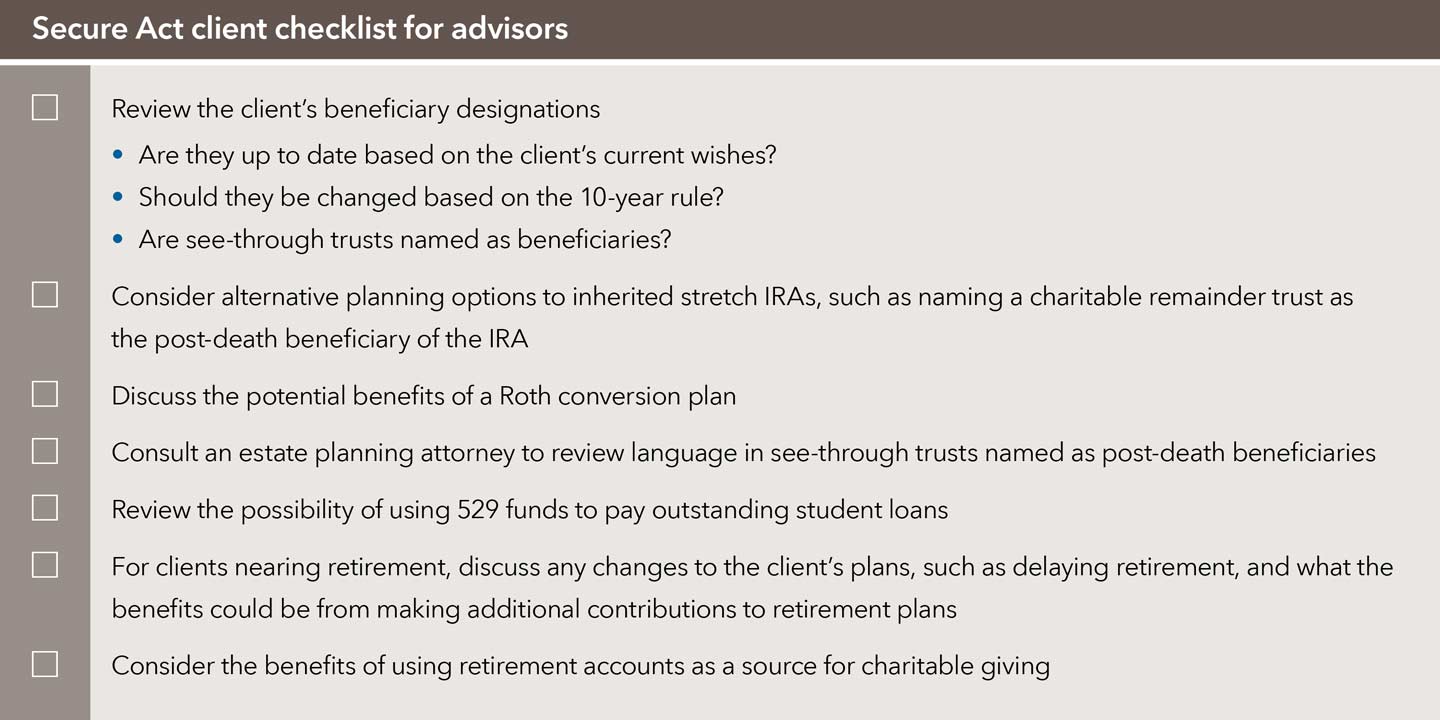A new year brings with it sweeping new federal rules affecting U.S. retirement plans.
The Setting Every Community Up for Retirement Enhancement (SECURE) Act is the most significant retirement-related legislation in more than a decade. Among many provisions, the law allows savers to delay required distributions, make penalty-free withdrawals for certain expenses and offers new tax incentives for small-business retirement plans.
Here’s an overview of some of the key measures taking effect in 2020:





